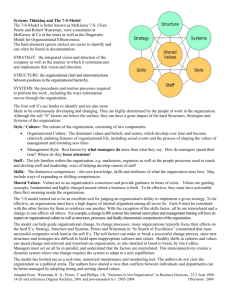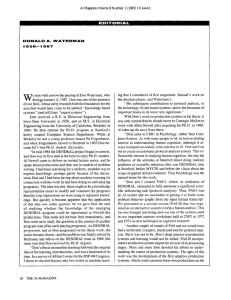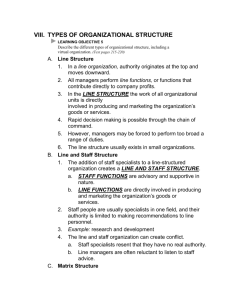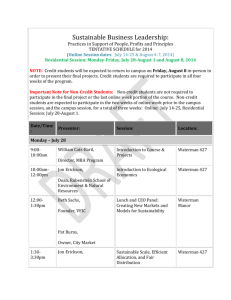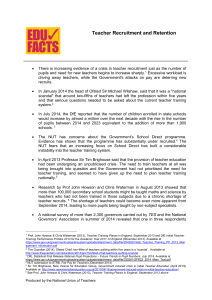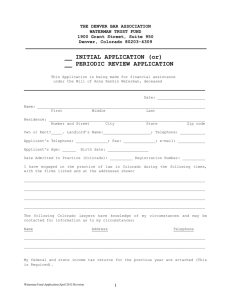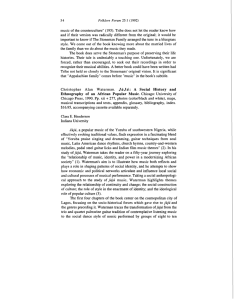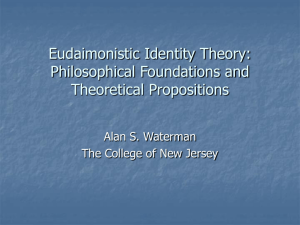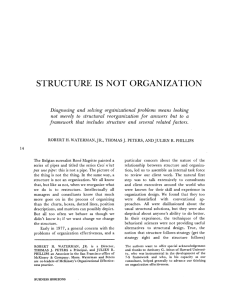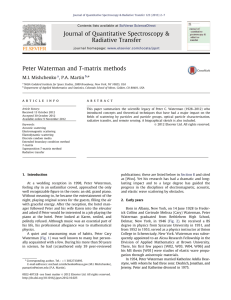variation, inheritance, natural selection, and time
advertisement
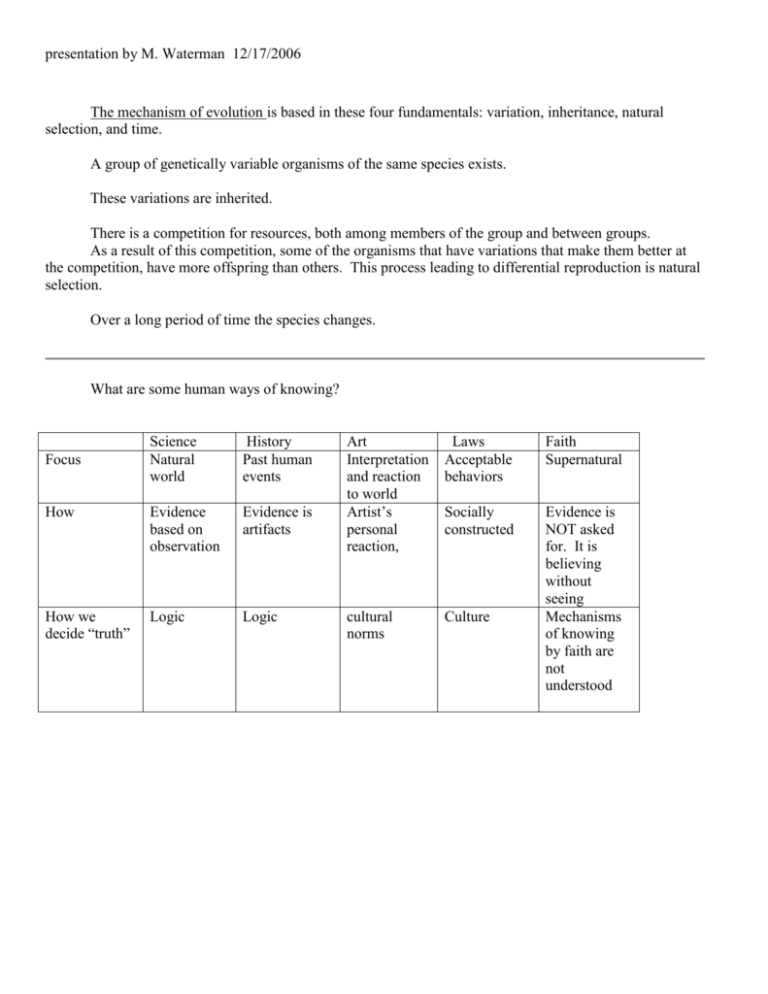
presentation by M. Waterman 12/17/2006 The mechanism of evolution is based in these four fundamentals: variation, inheritance, natural selection, and time. A group of genetically variable organisms of the same species exists. These variations are inherited. There is a competition for resources, both among members of the group and between groups. As a result of this competition, some of the organisms that have variations that make them better at the competition, have more offspring than others. This process leading to differential reproduction is natural selection. Over a long period of time the species changes. What are some human ways of knowing? Science Natural world History Past human events How Evidence based on observation Evidence is artifacts How we decide “truth” Logic Logic Focus Art Interpretation and reaction to world Artist’s personal reaction, Laws Acceptable behaviors Faith Supernatural Socially constructed cultural norms Culture Evidence is NOT asked for. It is believing without seeing Mechanisms of knowing by faith are not understood presentation by M. Waterman 12/17/2006 I. Authors of the highest eminence seem to be fully satisfied with the view that each species has been independently created. To my mind it accords better with what we know of the laws impressed on matter by the Creator, that the production and extinction of the past and present inhabitants of the world should have been due to secondary causes, like those determining the birth and death of the individual. . . . It is interesting to contemplate a tangled bank, clothed with many plants of many kinds, with birds singing on the bushes, with various insects flitting about, and with worms crawling through the damp earth, and to reflect that these elaborately constructed forms, so different from each other, and dependent upon each other in so complex a manner, have been produced by laws acting around us. . . . There is a grandeur in this view of life with its several powers, having been originally breathed by the Creator into a few forms or into one; and that, while the planet has gone circling on according to the fixed law of gravity, from so simple a beginning endless forms most beautiful and most wonderful have been, and are being evolved. II. "Collaboration between religion and modern science is to the advantage of both, without at all violating their respective autonomy. Just as religion requires religious freedom, so science legitimately claims freedom of research." "Cosmogony and cosmology have always aroused great interest among peoples and religions. The Bible itself speaks to us of the origin of the universe and its makeup, not to provide us with a scientific treatise, but in order to state the correct relationships of man with God and with the universe. Sacred scripture wishes simply to declare that the world was created by God, and in order to teach this truth it expresses itself in the terms of the cosmology in use at the time of the writer. The sacred book likewise wishes to tell men that the world was . . . created for the service of man and the glory of God. Any other teaching about the origin and makeup of the universe is alien to the intentions of the Bible, which does not wish to teach us how heaven was made but how one goes to heaven." What is each author’s view of evolution? What is each author’s religious beliefs? Would either or both of these authors be a member of this church? presentation by M. Waterman 12/17/2006 Evolution “quiz” T = true, F = false _____1. Evolution is just a theory and just as good as the theory of creation. _____2. The theory of evolution is about the origin of life. _____3. Due to natural selection only the fittest survive. _____4. Evolution is both observable and testable. _____5. Evolution and a belief in God are compatible. _____6. Most biologists believe in evolution. _____7. Most major religions support the theory of evolution. _____8. The theory of intelligent design is based on good science. presentation by M. Waterman 12/17/2006 Drew Smith teaches 9th grade in a public jr. high school in a state that requires both the JudeoChristian biblical and the scientific evolutionary accounts for the diversity of life on earth be taught. The curriculum is clear about what science is and what is not science. It strives to acknowledge both explanations for the diversity of life on earth. Some parents have been complaining. The school principal asks Drew for advice on how to talk with the parents. CHOOSE EITHER A OR B, and help Drew outline a way that the principal can respectfully explain the curriculum to these parents. A. Some parents complain that religious ideas are being taught as science. or B. Some parents complain that the school is teaching children to believe in evolution and not the Bible. presentation by M. Waterman 12/17/2006 from: http://www.ncseweb.org/resources/articles/9213_the_creationevolution_continu_12_7_2000.asp presentation by M. Waterman 12/17/2006 Links http://evolution.berkeley.edu/evosite/evohome.html Teaching Evolution. Excellent, reputable National Science Teachers Association resources for evolution teaching http://nsta.org/evresources National Center for Science Education is a reputable resource for information on Evolution teaching. It has links to many types of resources. Go to http://www.ncseweb.org/link.asp?category=1 to see the kinds of links. Includes links to creationist sites. http://www.talkorigins.org/ A website devoted to discussion of evolution/creation controversy. http://www.eskeletons.org/ The e skeletons project. Look at bones from various primate taxa, view, examine, rotate.
